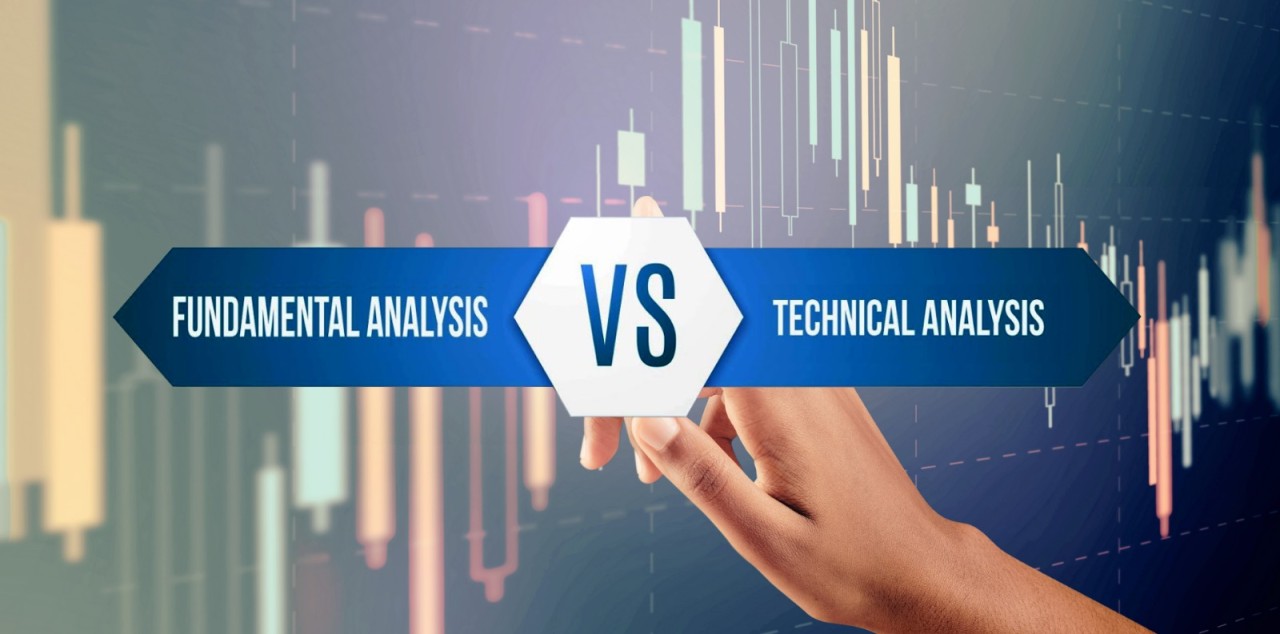When investing in the stock market, investors must be familiar with specific tools that help them make informed decisions. Fundamental and technical analysis are two approaches to market analysis, each with its distinct methodology. While fundamental analysis determines a security’s worth by examining its intrinsic value, technical analysis focuses on market trends and uses historical data to predict future performance. Let’s understand the differences between fundamental and technical analysis.
What is Fundamental Analysis?
Fundamental analysis evaluates security by assessing the financial and economic factors influencing its value. This type of analysis focuses on a company’s financial health, industry trends, and other macroeconomic factors. The goal of fundamental analysis is to determine the intrinsic value of a company and its stock based on financial performance, growth potential, and overall health.

Fundamental analysts start by analyzing a company’s financial statements, including income, balance, and cash flow statements. These statements help evaluate vital financial metrics such as revenue, profit margins, debt levels, and various non-financial factors.
Additionally, fundamental analysis involves examining macroeconomic factors like interest rates, GDP growth, inflation, and consumer confidence to assess the overall economic health and its impact on the company’s future outlook and, ultimately, its stock price.
What is Technical Analysis?
Technical analysis is a method of evaluating securities by analyzing statistics generated by market activity, such as past prices and volume. Rather than focusing on the company’s financial health, it centers on the overall trends and patterns reflected in the stock price chart. Through technical analysis, traders attempt to predict future price movements based on historical market data.
The basic assumption of technical analysis is that stock prices move in trends and these trends tend to repeat over time. By identifying these trends and patterns, future price movements can be predicted. Technical analysis also assumes that all known information and fundamental factors are already reflected in the stock price.
Under this approach, analysts do not attempt to measure the intrinsic value of a stock. Instead, they try to determine future price movements based on historical data and patterns, ultimately identifying suitable entry and exit points. Various technical indicators are used to plot significant price points on a chart, such as support and resistance levels, which are crucial to identifying trading opportunities.

Key Differences Between Fundamental and Technical Analysis
Fundamental and technical analysis represent two different schools of thought in market investment. While both are used to forecast future stock prices, their approaches differ significantly. Here are the main differences between fundamental and technical analysis:
Meaning:
Fundamental Analysis: Considers the most basic aspects of a business. Technical Analysis: This involves looking at historical chart data and metrics such as price and stock volume.
Assumption:
Fundamental Analysis is based on the premise that by studying a company’s fundamentals, one can predict its growth and potential success. Technical Analysis: Assumes that the stock’s current price contains all relevant information.
Objective:
Fundamental Analysis: Aims to determine a company’s or stock’s intrinsic value. Technical Analysis: Aims to predict the future price trend of a stock.
Data:
Fundamental Analysis: Relies on financial statements and economic data. Technical Analysis: Relies on historical price and volume data of stocks.
Time Horizon:
Fundamental Analysis: Usually used for long-term investment. Technical Analysis: Often used for short-term trading.
Interpretation:
Fundamental Analysis: Investors can buy a stock if it is undervalued and shows growth potential and sell it if it is overvalued. Technical Analysis: Analyze price trends on charts using various indicators to determine entry and exit points.
Indicators:
Fundamental Analysis: Uses financial indicators of the company such as net profit, revenue, assets, liabilities, and financial ratios. Technical Analysis: This method uses technical indicators, such as RSI, moving averages, MACD, etc., on price charts to identify key price levels and determine entry and exit points.

Leave a Reply